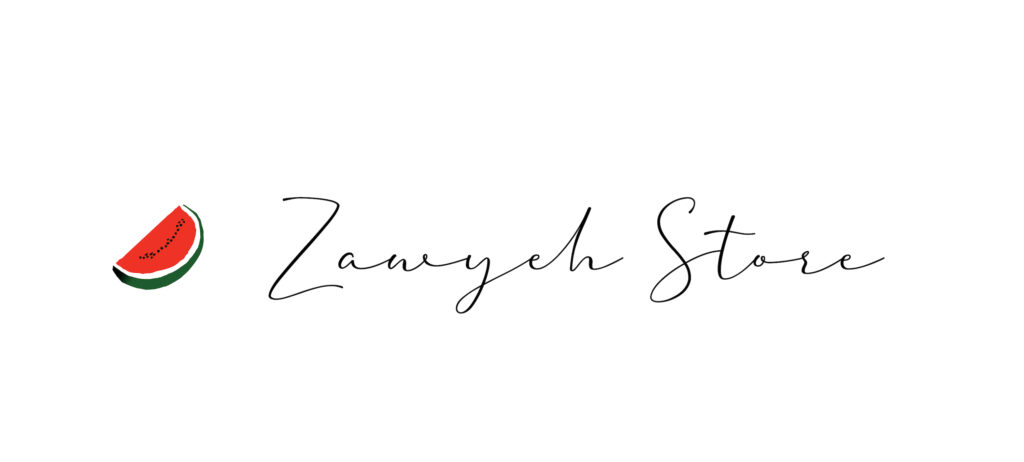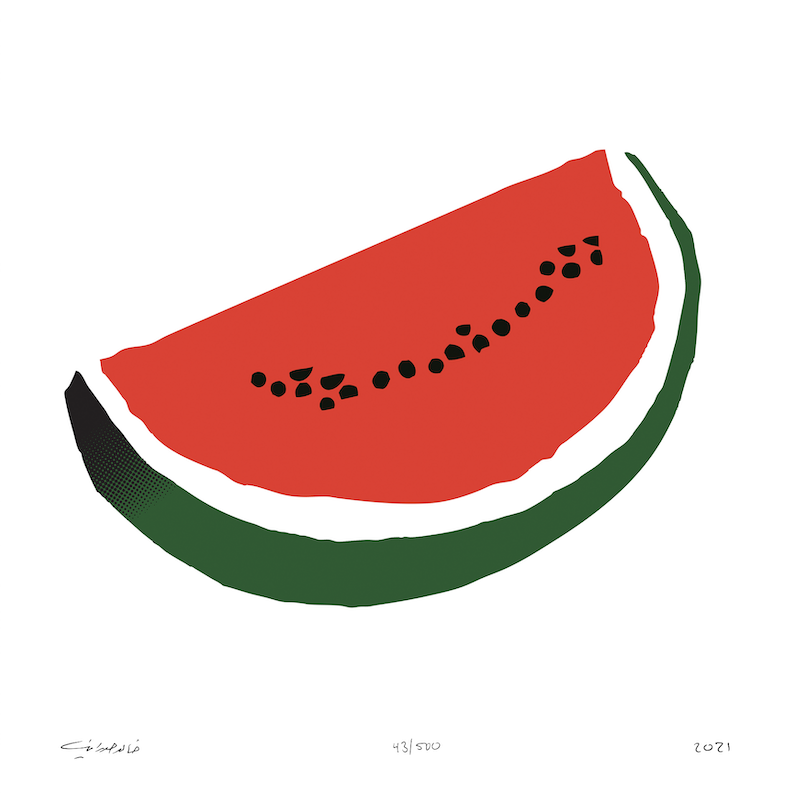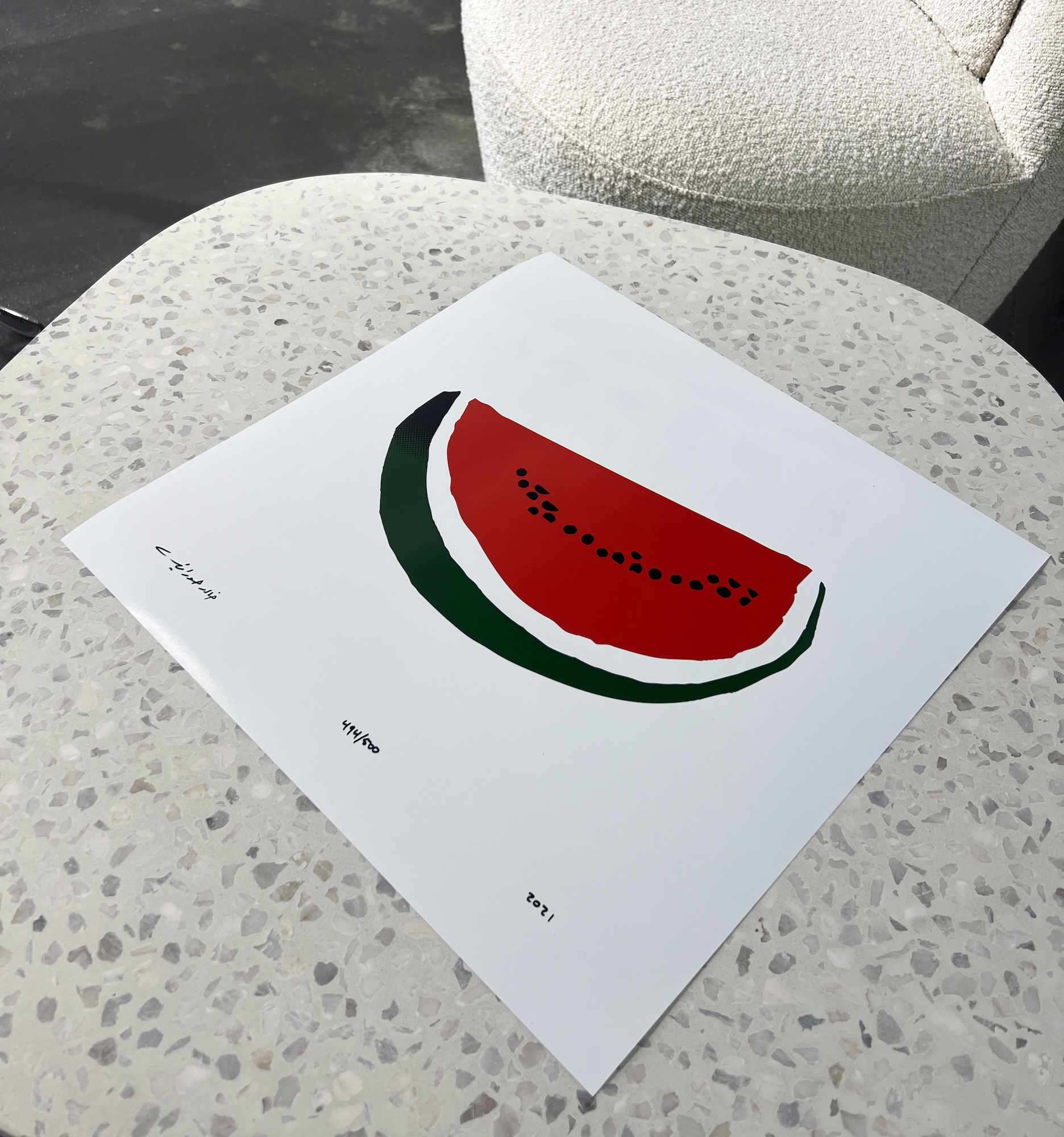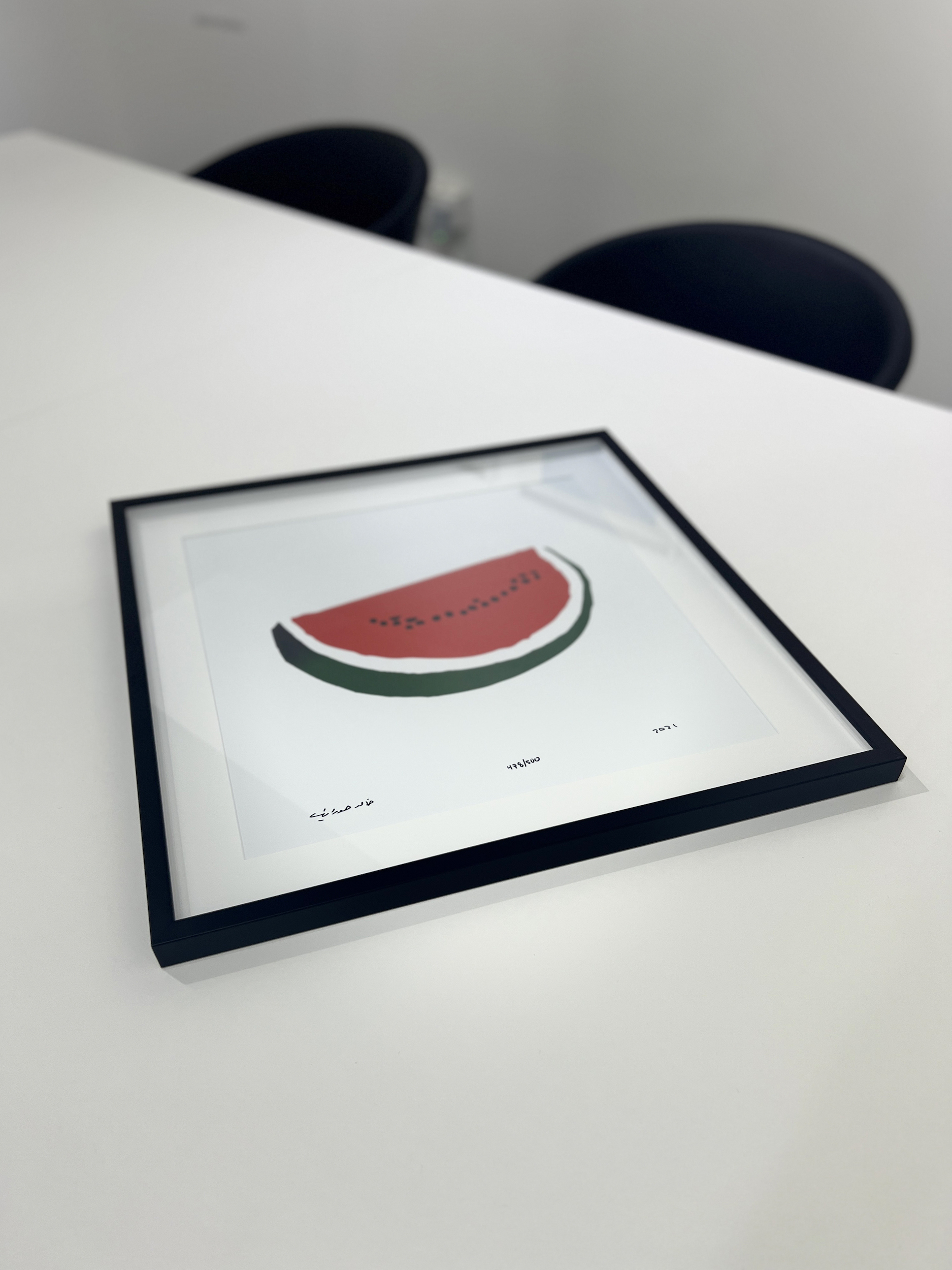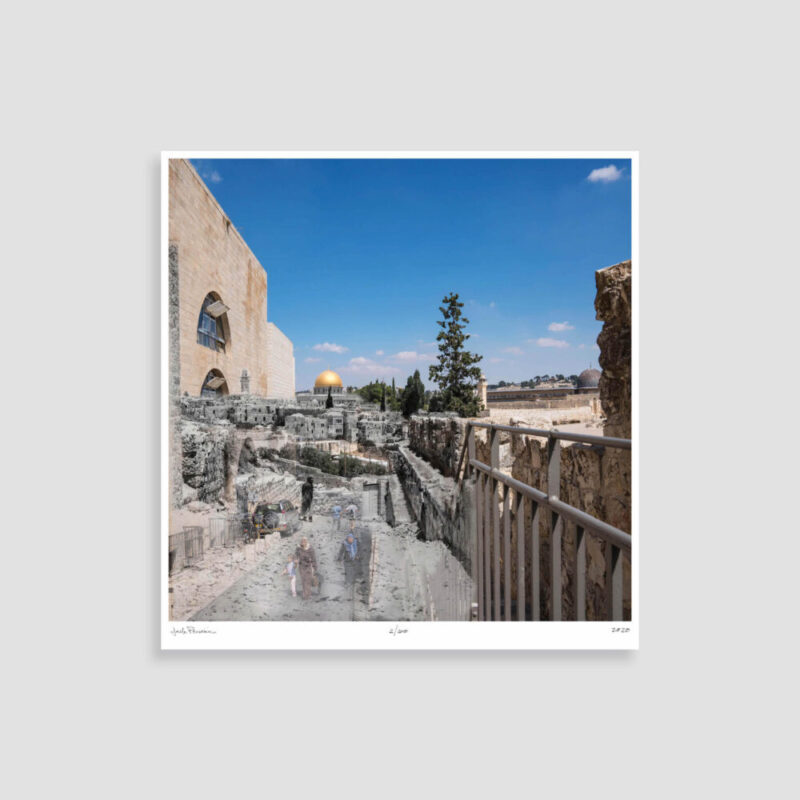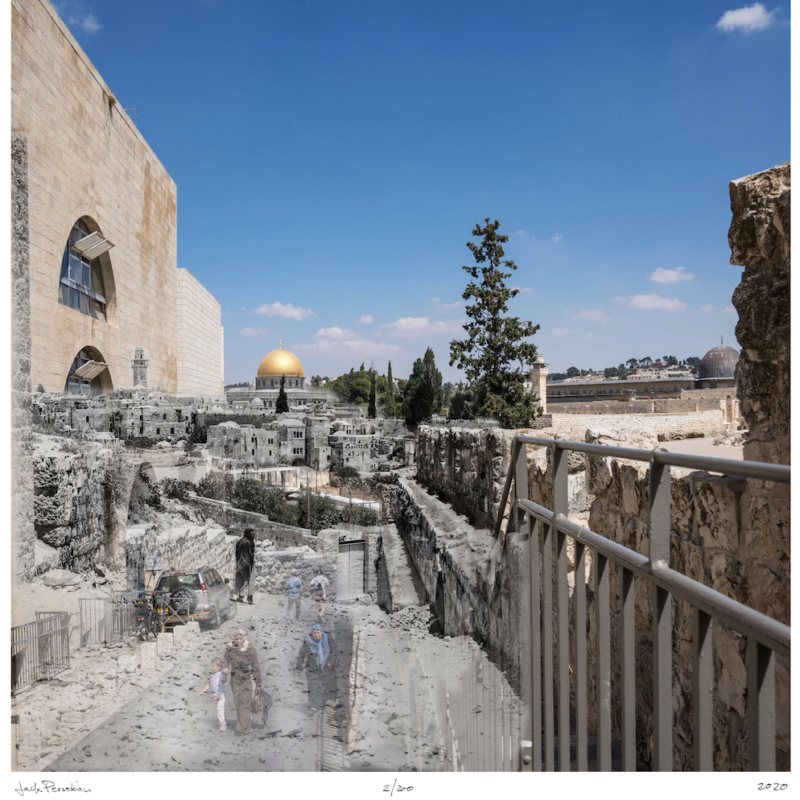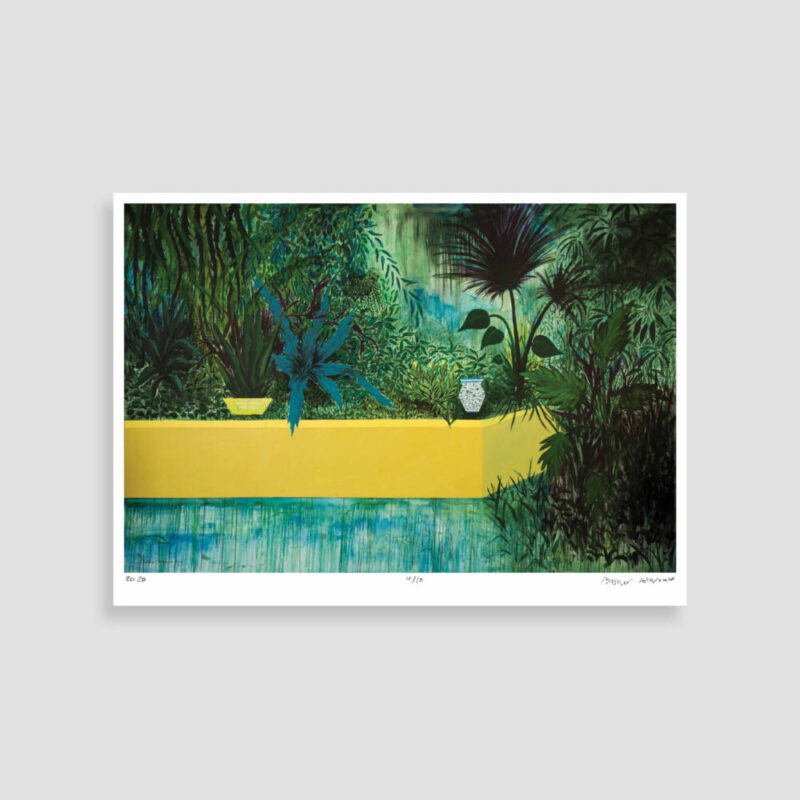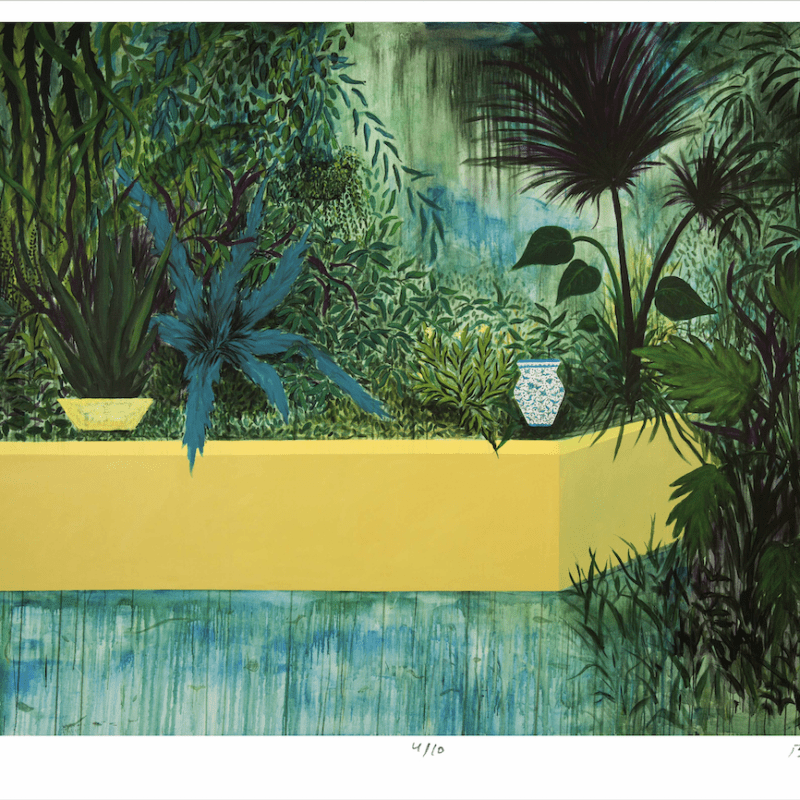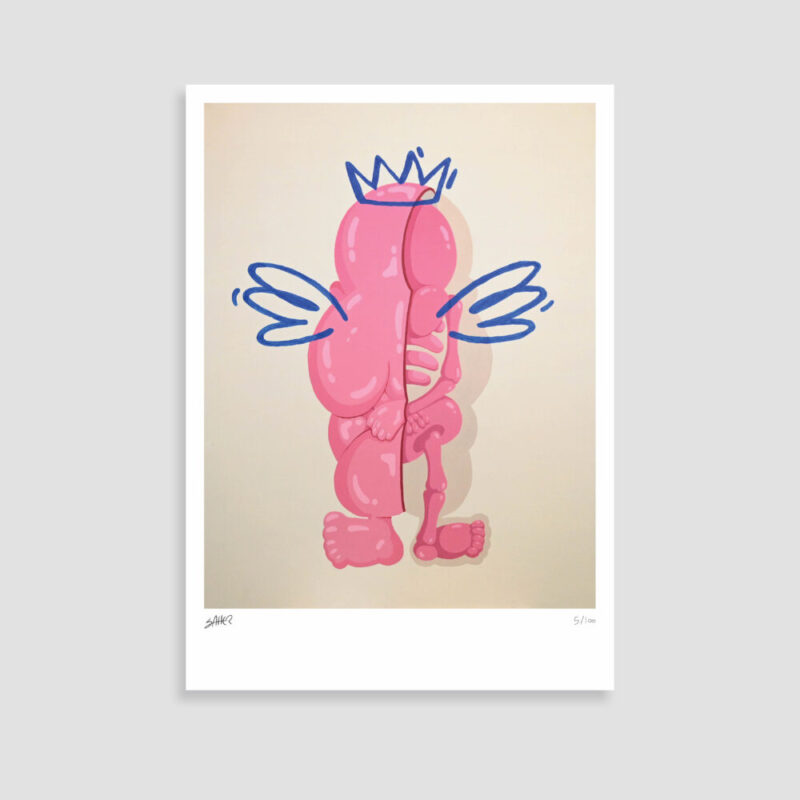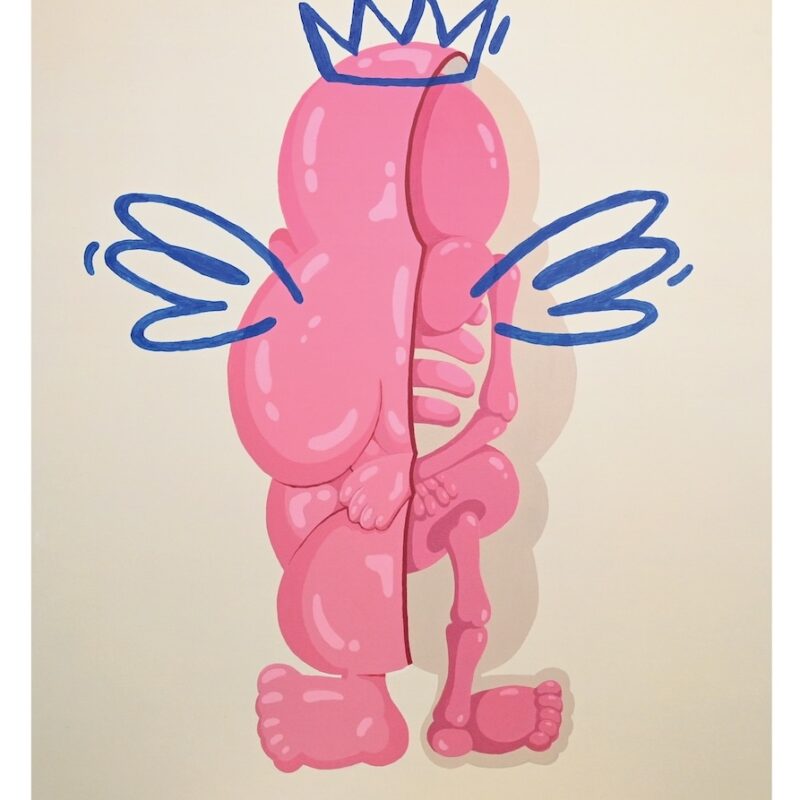Your cart is currently empty!
Watermelon Flag by Khaled Hourani
$ 380.00
Watermelon Flag (2021) by Khaled Hourani
40 x 40 cm
Aqueous print on archival photo paper, 260 gsm
Limited to 500 editions (+AP), hand-signed by the artist
Shipping and Delivery
- $15 flat fee for local delivery within Ramallah and Dubai (3-5 days)
- $75 flat fee for international shipping (7-10 days) via DHL
- Ships unframed
284 in stock
Watermelon Flag by Khaled Hourani
We’re excited to introduce limited edition prints of the popular artwork called “Watermelon Flag” by Khaled Hourani. Notably, this artwork is special because it represents an important story about the use of Palestinian flag colors during a specific time in history.
Khaled Hourani’s “Watermelon Flag” is a creative take on the colors of the Palestinian flag. Besides, it highlights the time when the Israeli occupation had banned the use of these flag colors in paintings. Back in 1967, after the West Bank and Gaza were occupied by Israel, displaying the Palestinian flag and its colors in any form, whether in publications, advertisements, or even old photographs, could lead to severe consequences, including imprisonment.
The choice of watermelon, with its red, green, black, and white hues, serves as a symbolic representation of the Palestinian flag. Additionally, this artwork beautifully narrates the story of that historical period when the flag’s colors held significant meaning and importance.
Furthermore, the watermelon by Khaled Hourani. Finally, this is the perfect print.
The Watermelon Symbol in Palestinian Struggles
During the 1980s, Zionist forces took action against an art gallery in Ramallah. They arrested three artists – Nabil Anani, Sliman Mansour, and Isam Bader – because they had used the colors of the Palestinian flag in their artworks. Sliman Mansour recently shared in an interview with AJ+ how an Israeli police chief attempted to persuade them to remove the political elements from their art. Clearly, he said, “He was trying to convince us not to create political art. He asked us, ‘Why do you make political art? Why don’t you paint beautiful flowers or nude figures? It’s pleasant. I might even buy from you.’” The police chief then directed the artists to submit their paintings to the Israeli Forces for approval before exhibiting them, marking each artwork as either acceptable or not. Clearly, any artwork falling into the latter category would be confiscated.
In contrast, the watermelon by Khaled Hourani
Khaled Hourani along with Mansour and Anani, he co-founded the International Art Academy of Palestine. Hourani painted a large-scale version of the watermelon for an exhibition in Toulouse, France, and variations appeared at Darat Al Funun in Amman, Jordan, and the Center of Contemporary Art, Glasgow. In recent months, he claims, attacks on Gaza have conjured spirits of past generations through revivals of their artworks.
Additionally, the watermelon flag by Khaled Hourani
“Art played a significant role in this conflict through songs, logos, and visual representations,” Hourani explained. “Furthermore, art was brought back from the past, from old media. Importantly, it wasn’t just embraced by the people in Palestine; it resonated with people around the world. Consequently, this was evident in the extensive and unparalleled solidarity efforts in support of Palestine and its rightful cause.”
Above all, the watermelon flag by Khaled Hourani
What led to the concept of the watermelon?
“The officer raised his voice and said, ‘Even if you do a watermelon, it will be confiscated,’” Mansour said. “Therefore, the idea of the watermelon came actually from the officer, not from us.”
For example, the watermelon by Khaled Hourani
Additional information
| Dimensions | 40 × 40 cm |
|---|
